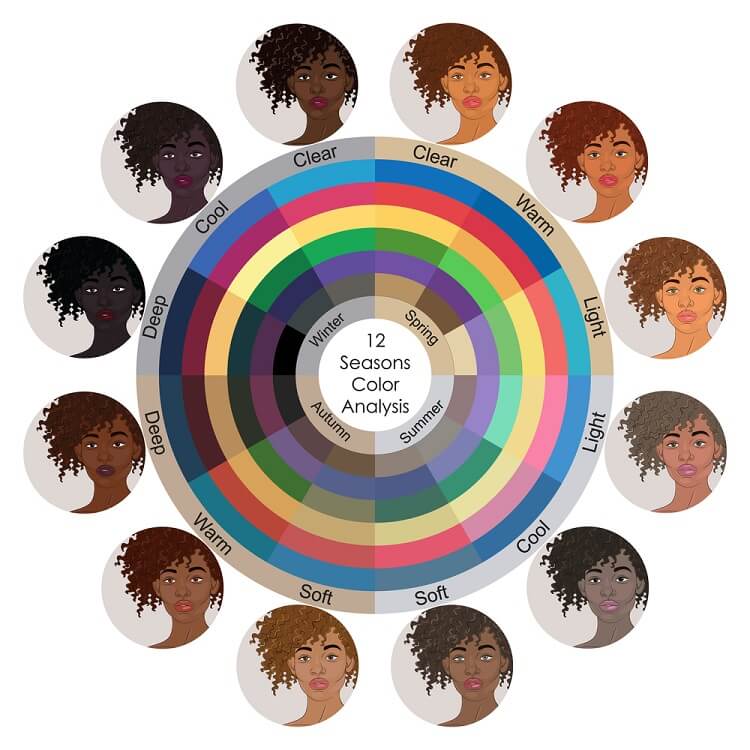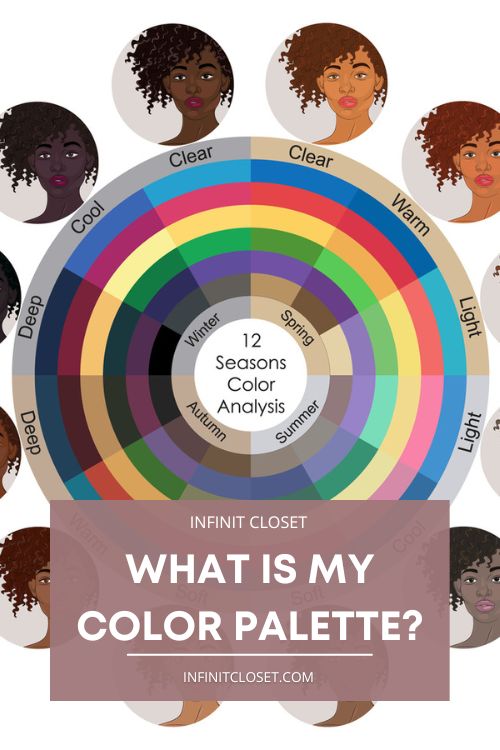Digitalization has made it easy to access the world with just one click. You can do everything online, from ordering food to buying clothes. Shopping for clothes online might make your life more comfortable, but there are a few downsides. If you do not know your color palette, you may buy clothes that do not suit you.
It is natural for specific colors to look better on some people than others. You can determine what colors suit you best by determining your color palette. You can simplify this process by learning about the different seasonal colors and choosing the ones that work for you. This article will help you select your color palette and enhance your wardrobe.
Seasonal Color Analysis

One of the most popular color theories follows different seasons. Since the human mind usually associates specific colors with each season, remembering color is easier this way. For example, when you think about winters, you might automatically think of icy colors like blue or cyan. However, the seasonal color theory has a few more elements. Let us look at the main factors of a seasonal color palette.
Hue
Hue refers to different base colors. Red, yellow, blue, and green are all examples of different hues. They are the purest form of colors with no additional shades or mixing with neutral tones. You can further divide hues into either “warm” or “cool” colors.
Warm colors include color hues from the red, orange, and yellow families, whereas cool colors include shades of blue, green, and purple. Cool colors generally reflect summer and winter, while warm colors are for spring and autumn.
Tints and Shades
While color hues are pure color pigments, you can form tints and shades by mixing the former with black or white. Color tints and shades vary in value and contrast; they can be “light” or “dark.”
Color Intensity
Colors can either be “soft” or “bright” and clear. The chroma or saturation of a color determines whether it is soft or bright. Usually, the chroma of your color palette depends on the contrast between your features.
Cooler shades with low chroma may be best for you if your skin tone and features are prominent and striking. Similarly, opt for bright and crisp colors if you have light skin with low contrast between your features.
Determining Your Color Palette

Undertones
The first thing you need to do when selecting your color palette is to determine the base color of your skin. The human body generally has undertones of yellow, red, and blue. There are also neutral-warm and neutral-cool undertones like orange and purple.
You can find out whether you have a warm or cool undertone by analyzing your natural eye color, hair color, and skin tone. Gray, green, and blue eyes usually indicate a cool tone. Similarly, hazel, black, and amber eyes could mean you have a warmer tone. Blond and ashy gray hair colors indicate cool tones, while auburn and red hair display warmer ones.
The primary indicator of your natural undertone is your skin. You can examine your upward-facing palm. If you see a blue tint, you have a cool undertone. Meanwhile, a yellow tint suggests a warm undertone. Additionally, a red tint implies that you have a neutral undertone, which can support nearly any color palette.
Gold and Silver Test
You can also determine your color palette by using gold or silver jewelry. These metals can either conflict with or compliment your skin tone, revealing your undertones. If you’re not sure what your undertones are, try on any gold or silver jewelry you might own.
For example, gold jewelry compliments warmer tones. Thus, if you find that you look better in gold jewelry, you probably have warm undertones. In contrast, silver jewelry better suits individuals with cooler undertones. Thus, if you prefer the look of silver jewelry on your skin, you probably have cooler undertones. However, those with neutral undertones may find that they suit both gold or silver bracelets, necklaces, or earrings.
Picking Your Final Color Palette
Determining whether you have a warm or cool tone is vital in deciding your color palette. Once you figure that out, you can experiment using different shades and seasonal colors from the palette. If you have a cool undertone, you can start by trying out winter or summer colors like shades of blue. You can further decide the intensity and softness of the colors by seeing how they complement your complexion. For example, Soft Winter colors may seem washed out if you have pale skin. So, you should select Bright Summer colors with high contrast and avoid pastels.
Here is a list of the basic features of seasonal color palettes.
Summer Colors
- Cool undertones
- Soft with low chroma
- For lighter facial features
- Avoid pastels
Winter Colors
- Cool undertones
- Bright with high chroma
- For features with high contrast
- Avoid clothing with high vibrancy
Spring Colors
- Warm undertones
- Bright with high chroma
- For lighter facial features
- Avoid pastels
Autumn Colors
- Warm undertones
- Soft with low chroma
- For features with high contrast
- Avoid clothing with high vibrancy
It would help if you did not restrain yourself from experimenting due to your color palette. This guide is to help you select colors that might complement your natural appearance. However, it is generic since every human being is unique. You should continue wearing colors you like and match them with accent colors based on your color palette.
Conclusion
Your color palette plays a vital role in selecting your wardrobe. When you wear colors that match your appearance, it makes you look more organized. Moreover, it is easy to determine your color palette. Firstly, you find out whether you have a warm or cool undertone. Next, you can observe the lightness and contrast between features like your eyes, hair, and skin tone. Finally, you can analyze your results and select a seasonal color palette that suits you best.


